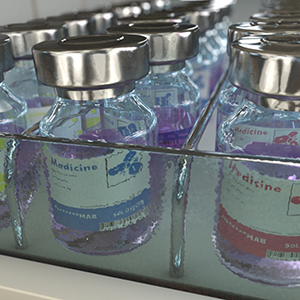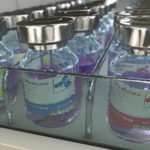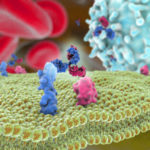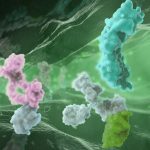 On August 9, 2023, the U.S. Food and Drug Administration (FDA) granted accelerated approval of TALVEY™ (talquetamab-tgvs), a first-in-class bispecific antibody for the treatment of adult patients with relapsed or refractory multiple myeloma (r/r MM) who have received at least four prior lines of therapy, including a proteasome inhibitor, an immunomodulatory agent, and an anti-CD38 antibody. This indication is approved under accelerated approval based on response rate and durability of response, and continued approval for this indication is contingent upon verification and description of clinical benefit in confirmatory trial(s).
On August 9, 2023, the U.S. Food and Drug Administration (FDA) granted accelerated approval of TALVEY™ (talquetamab-tgvs), a first-in-class bispecific antibody for the treatment of adult patients with relapsed or refractory multiple myeloma (r/r MM) who have received at least four prior lines of therapy, including a proteasome inhibitor, an immunomodulatory agent, and an anti-CD38 antibody. This indication is approved under accelerated approval based on response rate and durability of response, and continued approval for this indication is contingent upon verification and description of clinical benefit in confirmatory trial(s).
TALVEY™ is approved as a weekly or biweekly subcutaneous (SC) injection after an initial step-up phase. The TALVEY™ prescribing information includes a Boxed Warning for cytokine release syndrome and neurologic toxicity. The drug is available only through a restricted program called the TECVAYLI® and TALVEY™ Risk Evaluation and Mitigation Strategy
Talquetamab (JNJ-64407564) is a humanized, hinge-stabilized IgG4k/l T-cell engaging bispecific antibody with reduced effector function developed by Janssen. The antibody targets G protein-coupled receptor class C group 5 member D (GPRC5D), which is highly expressed in malignant plasma cells, and CD3 on T cells. TALVEY™ was granted Orphan Drug Designation for the treatment of MM by the U.S. FDA and the European Commission. The drug was also granted Breakthrough Therapy designation by the FDA for use in patients with r/r MM based on results of the MonumenTAL-1 study.
FDA’s approval was based on the single-arm, open-label, multicenter MonumenTAL-1 study (NCT03399799, NCT04634552), which evaluated the efficacy of TALVEY monotherapy in patients with r/r MM. Patients treated with the weekly dosing schedule received step-up doses of 0.01 mg/kg and 0.06 mg/kg of TALVEY followed by TALVEY 0.4 mg/kg subcutaneously weekly thereafter. Patients treated with the biweekly dosing schedule received step-up doses of 0.01 mg/kg, 0.06 mg/kg, and 0.3 mg/kg (0.75 times the recommended step-up dose 3) of TALVEY followed by TALVEY 0.8 mg/kg subcutaneously biweekly, thereafter. Patients on both dosing schedules were treated until disease progression or unacceptable toxicity. According to the prescribing information, at the SC biweekly dose of 0.8 mg/kg, 73.6% of patients (95% Confidence Interval [CI], range, 63.0 to 82.4) achieved an overall response rate (ORR). With a median follow-up of nearly 6 (range, 0 to 9.5) months from first response among responders, 58% of patients achieved a very good partial response (VGPR) or better, including 33% of patients achieving a complete response (CR) or better. At the SC weekly dose of 0.4 mg/kg, 73.0% of patients (95% CI, range, 63.2 to 81.4) achieved an ORR. With a median follow-up of nearly 14 (range, 0.8 to 15.4) months from first response among responders, 57% of patients achieved a VGPR or better, including 35% of patients achieving a CR or better. Responses were durable with a median duration of response not reached in the 0.8 mg/kg SC biweekly dose group and 9.5 months in the 0.4 mg/kg SC weekly dose group. Among patients receiving the 0.8 mg/kg SC biweekly dose, an estimated 85% of responders maintained response for at least 9 months.
Talquetamab is being evaluated in a randomized Phase 3 study (MonumenTAL-1; NCT05455320) comparing the efficacy of talquetamab SC in combination with daratumumab SC or in combination with daratumumab and pomalidomide vs daratumumab SC in combination with pomalidomide and dexamethasone in patients with r/r MM. Initiated in October 2022, the study has an estimated enrollment of 810 and an estimated primary completion date in February 2026.

 On August 24, 2022,
On August 24, 2022, 

